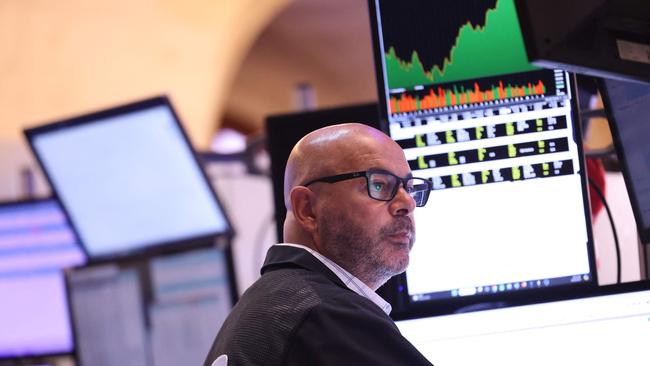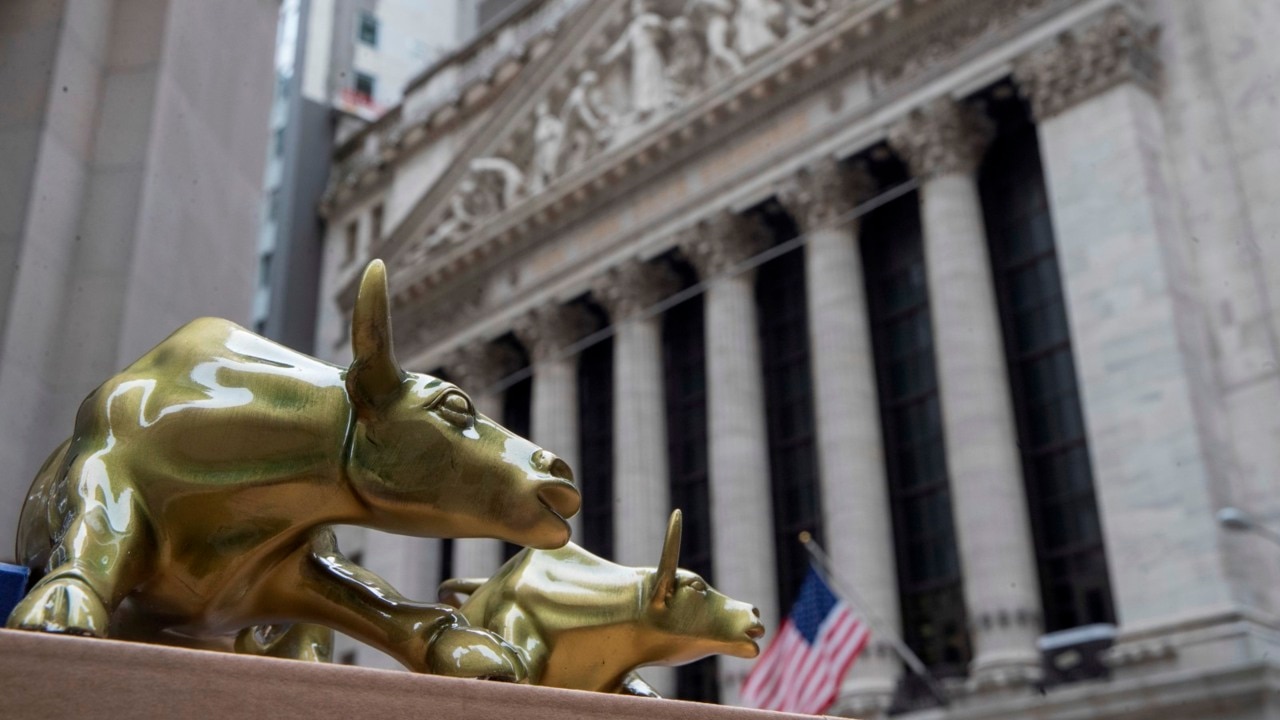Markets take stock before Fed chair Powell’s Jackson Hole speech
It has been a spectacular rebound, but the big question for stocks is whether Jerome Powell’s Jackson Hole upcoming speech will strike enough of a Goldilocks tone to keep it going.

Business
Don't miss out on the headlines from Business. Followed categories will be added to My News.
It has been a spectacular market rebound, but the big question for stocks is whether Jerome Powell’s Jackson Hole speech on Friday will strike enough of a Goldilocks tone to keep it going.
Far from retaining doubt about the US economic outlook, the S&P 500 bounced almost 10 per cent in two weeks as the Nasdaq Composite jumped 14 per cent and stock market volatility collapsed.
AI leader Nvidia rose a stunning 43 per cent from its August low – not bad for a $US3.13 trillion ($4.64 trillion) stock. Nvidia’s highly-anticipated quarterly report is due next Thursday.
Australia’s less-volatile market bounced only 5 per cent in the same period. But like the S&P 500, the ASX 200 was within reach of a record high of 8148.7 points hit early this month.

Fed chair talks at the annual central bankers’ gathering in Wyoming are often pivotal.
Two years ago, Powell set up for a more aggressive US rate tightening cycle that went further than just about anyone expected after inflation proved “persistent” rather than “transitory” as the Fed initially thought. At last year’s conference, he reiterated the hawkish message, warning that the Fed was “prepared to raise rates further if appropriate.”
With US inflation now within sight of the 2 per cent target, he’s expected to reinforce expectations of imminent rate cuts that were hinted at last month when the Federal Open Market Committee said it was “attentive to both sides of its dual mandate”.
But after just one disappointing non-farm payrolls report that was quickly dismissed as other economic data didn’t support nascent fear of a recession, there’s no obvious reason for Powell to warn of economic weakness as much as he talked about the risk of inflation in 2022 and 2023.
Any mention of the “R-word” would definitely be bad for risk asset markets at this point.
Powell is likely to focus more on the disinflationary progress that the Fed’s tight monetary policy has achieved and how that gives policymakers the ability to cut rates to maintain employment – because the inflation “speed limit” is coming down – rather the need to cut rates to ward off recession.
Probably he will stress the need to be pre-emptive rather than reactive on monetary policy, and how the Fed may soon need to be cutting rates just to prevent a rise in real interest rates.
Citi maintains that the US is heading for a recession and that the Fed needs to get started with an outsized 50 basis point rate cut next month, but this is by no means a consensus view.
No doubt, Powell will aim to keep maximum optionality on interest rates. But any strong hint that the Fed needs to do an outsized rate hike next month could reignite US recession fears.
With an aggressive US rate cutting path including 100 basis points by year-end and 200 basis points by mid-2025 already priced in, it may be a fine line for Powell to give no great sense of urgency to cut rates while also keep markets believing in their current rate cutting expectations.
Of course, the substantial dialling back of US rate cut expectations since the end of 2023 – from seven cuts starting in March to four cuts starting in September – didn’t stop the S&P 500 from rising 17 per cent year to date, albeit driven by the AI theme and a 77 per cent rise in Nvida.
However, after the S&P 500 rose 10 per cent and the VIX collapsed from 65 to 15 per cent in two weeks, the risk appetite may be sensitive to any signalling of a slower pace of US rate hikes.
Ahead of Powell’s speech are FOMC minutes, weekly jobless claims and perhaps more importantly a Bureau of Labour Statistics update on preliminary revisions to payrolls based on tax findings.
Friday’s appearance by Bank of Japan governor Kazuo Ueda’s before parliament to explain the central bank’s outsized rate hike last month and Japan’s inflation outlook will also be closely watched in light of the recent sell-off in yen carry trades and subsequent verbal pivot away from rate hikes by deputy Shinichi Uchida.
Despite the sharp rebound in risk assets, Citi warns against complacency at this point.
Despite the “everything is fine” mantra in markets, the US bank warns that concerns about “upside risk to inflation have rapidly been replaced by concerns about downside risk to growth.”
“After the unemployment rate rose to 4.3 per cent, markets were pricing in downside risk to growth,” said Citi’s US chief economist, Andrew Hollenhorst. “But two weeks of declining initial jobless claims and an unexpectedly strong advance in retail sales have left markets complacent.”
Perhaps the only real catalyst for markets now is more US labour market data. Certainly, the weekly unemployment claims data are being watched way more than usual.
A sharp spike in initial or continuing claims would indicate that lay-offs are picking up. But Hollenhorst said the lack of a spike in jobless claims doesn’t mean all is well.
For the time being, most of the softness in labour markets has been due to weak hiring. Data already available suggest downward revisions to jobs growth will be significant.
“This would go some of the way to reconciling the weaker household data, from which the unemployment rate is derived, with the stronger establishment survey data,” he said.
No doubt, the August jobs report out in early September has taken on increased importance.
“We do not subscribe to the theory that weather is behind the softer July report,” he said.
“Regional data last week made clear that the weakness was not due to distorted readings in Texas.”
He said the US unemployment rate staying at 4.3 per cent or moving higher would be “strong evidence that the labour market is in fact softening” and likely lead to a 50 basis point rate cut in September.
The question then would be whether that would be enough to placate markets already betting on rate cuts, particularly if they again worry the Fed is fighting a rearguard action against a recession.
Originally published as Markets take stock before Fed chair Powell’s Jackson Hole speech





